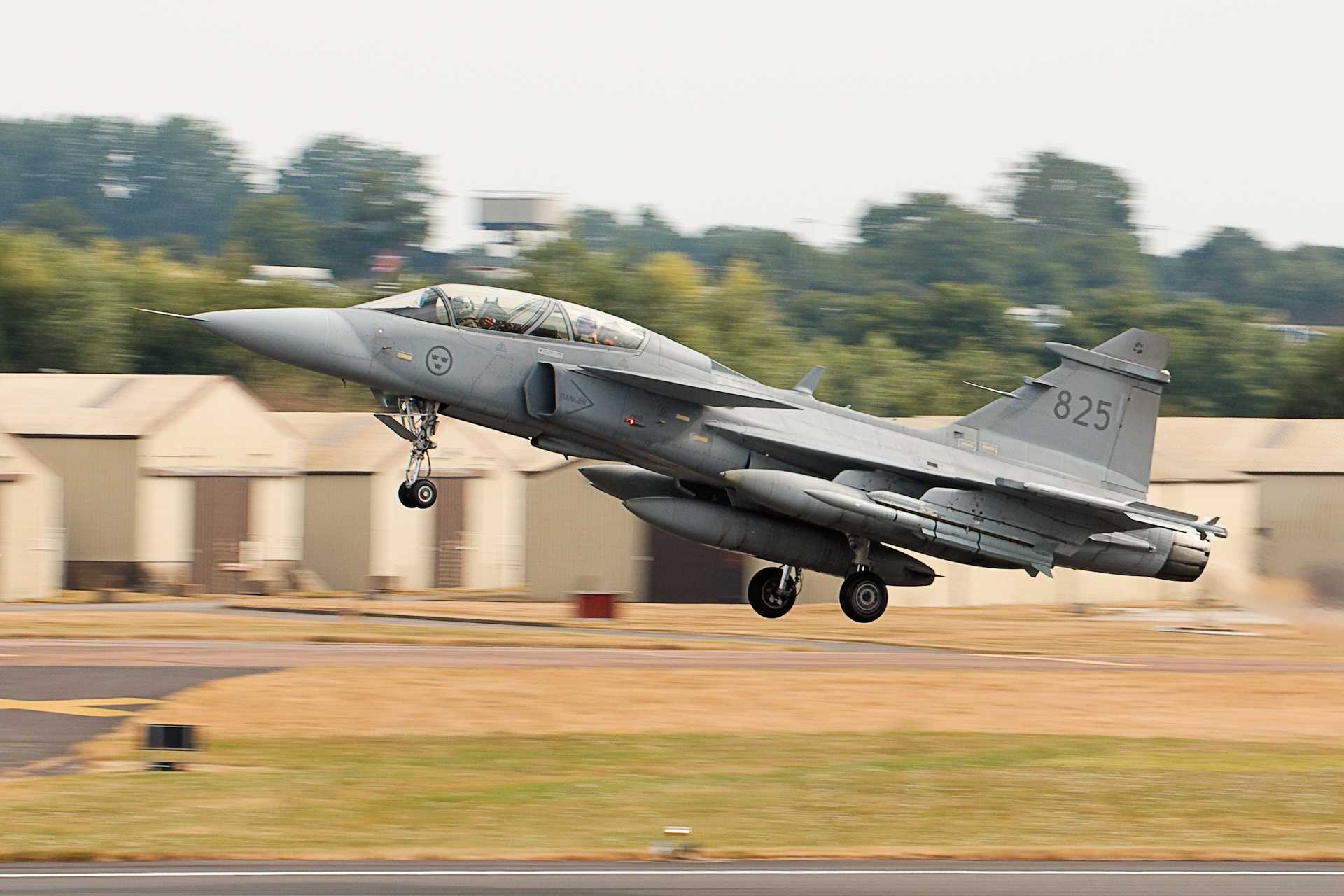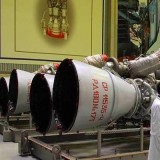Flash News: Sweden Joins NATO Air Policing for First Time with Gripen Fighter Jets Deployed to Poland

{loadposition bannertop}
{loadposition sidebarpub}
In a historic and strategically significant deployment, Sweden has joined NATO’s enhanced Air Policing mission for the first time since officially becoming the Alliance’s 32nd member in March 2024. This marks not only Sweden’s first operational military contribution under NATO command, but also the debut of Swedish fighter aircraft conducting air policing missions from the territory of another NATO member. Six Saab JAS 39 Gripen multirole fighter jets from the Swedish Air Force have been deployed to Malbork Air Base in Poland, where they are integrated into NATO’s defensive posture in the Baltic region.Follow Army Recognition on Google News at this link
The Swedish Saab JAS 39 Gripen, a versatile multirole fighter known for its agility and advanced systems, is now deployed at Malbork Air Base for NATO’s enhanced Air Policing—marking Sweden’s first operational mission under NATO command. (Picture source: Wikimedia)
The deployment of Swedish Gripen fighter aircraft is part of NATO’s enhanced Air Policing (eAP) initiative, a mission that was established in 2014 in the wake of Russia’s annexation of Crimea. Enhanced Air Policing is a forward-looking operation designed to safeguard the integrity of NATO airspace in the eastern part of the Alliance, particularly among frontline member states that share borders with Russia and Belarus. The operation also aims to demonstrate Alliance solidarity and deter any potential airspace violations or aggression near NATO borders.
Sweden’s Gripen fighters will be operating alongside Eurofighter Typhoons from the British Royal Air Force, deployed under the RAF’s Operation Chessman. The Eurofighter Typhoon, a twin-engine, highly agile multirole fighter, is capable of both air superiority and ground attack missions. It is equipped with advanced radar and sensor systems, and can carry a wide array of air-to-air and air-to-ground munitions, making it an ideal platform for air policing operations. Similarly, the Saab JAS 39 Gripen is a highly capable fourth-generation multirole combat aircraft, renowned for its agility, advanced avionics, and cost-effective operation. It is designed to operate in dispersed conditions and is optimized for rapid reaction missions, which makes it particularly suitable for NATO’s Air Policing framework.
Both aircraft types will operate under the command and control of NATO’s Combined Air Operations Centre (CAOC) in Uedem, Germany, which oversees air policing operations in Northern and Eastern Europe. The mission involves constant readiness to scramble and intercept any unauthorized or potentially hostile aircraft approaching or entering NATO airspace without proper clearance. Pilots are trained to quickly assess, identify, and if necessary, escort foreign military or civilian aircraft, ensuring that NATO’s airspace remains secure.
This joint deployment not only reinforces NATO’s deterrence posture on its eastern flank but also symbolizes Sweden’s deepening integration into the Alliance’s defense architecture. “We are well prepared to take the next step to further strengthen NATO’s air defence in terms of deterrence and to create security in NATO airspace together with our British colleagues,” stated Lieutenant Colonel Anders Gustafsson, Swedish Air Force Detachment Commander. His remarks reflect Sweden’s operational readiness and willingness to actively contribute to collective security.
Wing Commander Jacob, Commanding Officer of the RAF’s 140 Expeditionary Air Wing, welcomed the Swedish contribution, emphasizing: “We are here to defend and deter, standing ready to protect against any threat, whilst reassuring our allies of the UK’s commitment to NATO and the region.” The collaborative nature of the deployment underscores NATO’s emphasis on interoperability and shared responsibility.
The mission also serves as a message of Alliance unity and strength amid continuing geopolitical tensions in Eastern Europe. With this deployment, Sweden has effectively transitioned from a long-time NATO partner to an active contributor, reflecting its shift in defense policy in response to changing security dynamics in the region. This milestone sets a precedent for future Swedish involvement in NATO operations and strengthens the overall capability and cohesion of the Alliance.

{loadposition bannertop}
{loadposition sidebarpub}
In a historic and strategically significant deployment, Sweden has joined NATO’s enhanced Air Policing mission for the first time since officially becoming the Alliance’s 32nd member in March 2024. This marks not only Sweden’s first operational military contribution under NATO command, but also the debut of Swedish fighter aircraft conducting air policing missions from the territory of another NATO member. Six Saab JAS 39 Gripen multirole fighter jets from the Swedish Air Force have been deployed to Malbork Air Base in Poland, where they are integrated into NATO’s defensive posture in the Baltic region.
Follow Army Recognition on Google News at this link
The Swedish Saab JAS 39 Gripen, a versatile multirole fighter known for its agility and advanced systems, is now deployed at Malbork Air Base for NATO’s enhanced Air Policing—marking Sweden’s first operational mission under NATO command. (Picture source: Wikimedia)
The deployment of Swedish Gripen fighter aircraft is part of NATO’s enhanced Air Policing (eAP) initiative, a mission that was established in 2014 in the wake of Russia’s annexation of Crimea. Enhanced Air Policing is a forward-looking operation designed to safeguard the integrity of NATO airspace in the eastern part of the Alliance, particularly among frontline member states that share borders with Russia and Belarus. The operation also aims to demonstrate Alliance solidarity and deter any potential airspace violations or aggression near NATO borders.
Sweden’s Gripen fighters will be operating alongside Eurofighter Typhoons from the British Royal Air Force, deployed under the RAF’s Operation Chessman. The Eurofighter Typhoon, a twin-engine, highly agile multirole fighter, is capable of both air superiority and ground attack missions. It is equipped with advanced radar and sensor systems, and can carry a wide array of air-to-air and air-to-ground munitions, making it an ideal platform for air policing operations. Similarly, the Saab JAS 39 Gripen is a highly capable fourth-generation multirole combat aircraft, renowned for its agility, advanced avionics, and cost-effective operation. It is designed to operate in dispersed conditions and is optimized for rapid reaction missions, which makes it particularly suitable for NATO’s Air Policing framework.
Both aircraft types will operate under the command and control of NATO’s Combined Air Operations Centre (CAOC) in Uedem, Germany, which oversees air policing operations in Northern and Eastern Europe. The mission involves constant readiness to scramble and intercept any unauthorized or potentially hostile aircraft approaching or entering NATO airspace without proper clearance. Pilots are trained to quickly assess, identify, and if necessary, escort foreign military or civilian aircraft, ensuring that NATO’s airspace remains secure.
This joint deployment not only reinforces NATO’s deterrence posture on its eastern flank but also symbolizes Sweden’s deepening integration into the Alliance’s defense architecture. “We are well prepared to take the next step to further strengthen NATO’s air defence in terms of deterrence and to create security in NATO airspace together with our British colleagues,” stated Lieutenant Colonel Anders Gustafsson, Swedish Air Force Detachment Commander. His remarks reflect Sweden’s operational readiness and willingness to actively contribute to collective security.
Wing Commander Jacob, Commanding Officer of the RAF’s 140 Expeditionary Air Wing, welcomed the Swedish contribution, emphasizing: “We are here to defend and deter, standing ready to protect against any threat, whilst reassuring our allies of the UK’s commitment to NATO and the region.” The collaborative nature of the deployment underscores NATO’s emphasis on interoperability and shared responsibility.
The mission also serves as a message of Alliance unity and strength amid continuing geopolitical tensions in Eastern Europe. With this deployment, Sweden has effectively transitioned from a long-time NATO partner to an active contributor, reflecting its shift in defense policy in response to changing security dynamics in the region. This milestone sets a precedent for future Swedish involvement in NATO operations and strengthens the overall capability and cohesion of the Alliance.





